India’s Ranthambhore National Park is a government-run tiger reserve where you’ll have a chance to see not only the (incredibly beautiful) endangered Indian tiger, but a wide range of other wildlife from the northern state of Rajasthan. Half the world’s tiger population resides in India. The tigers are still somewhat elusive and you’re not guaranteed to see one, but going on safari at Ranthambhore National Park is an excellent place at which to view these magnificent animals in their natural habitat.
This article was updated March 27, 2024.
During my November visit, the air at Ranthambhore (also spelled “Ranthambore”) is fresh, and the greens, browns and golds of the park’s landscape are striking. Even without the animals, the grasslands, the sandy beaches at the watering holes and the rocky cliffs of the Aravalli and Vindhya mountain ranges are beautiful to see.
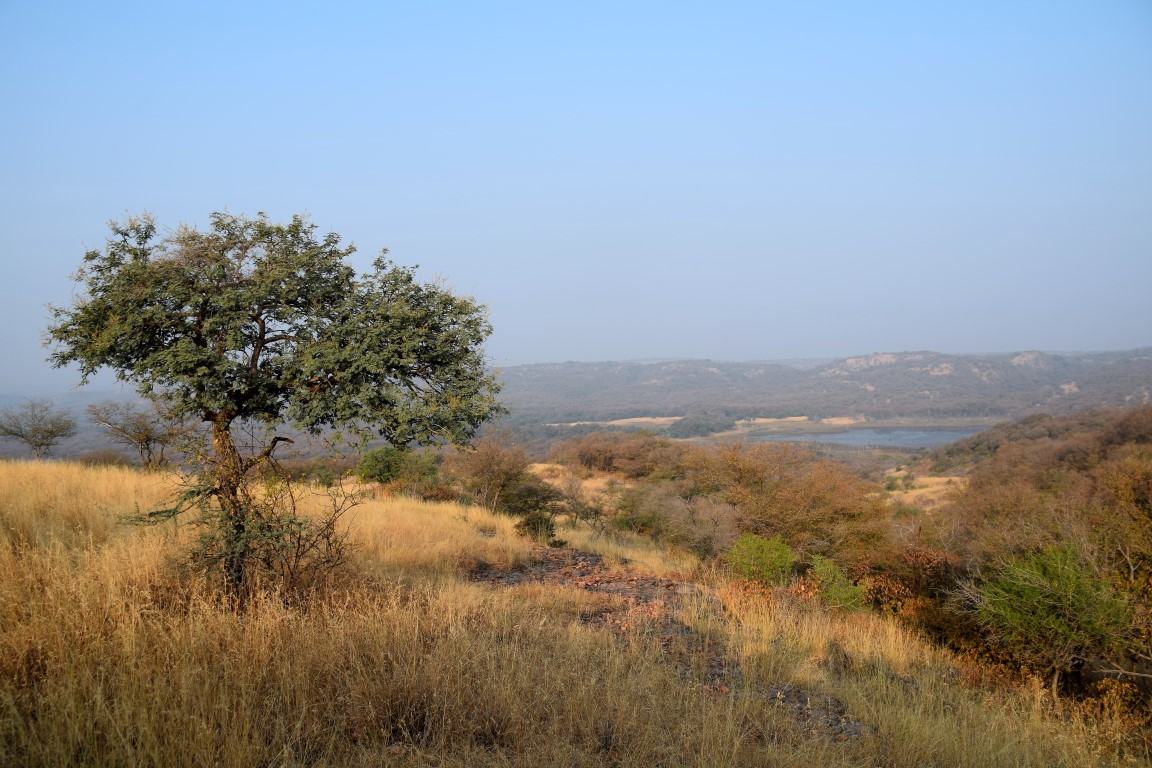
Revered, Elusive, Endangered and Protected
The tiger has always been both revered and feared in India for its strength and power. The tiger has a long mythological and literary history. The ability to show their own power is no doubt why Indian royals and the country’s invaders hunted this beautiful animal. At the turn of the 20th century, India’s population was estimated at 40,000.
But the 1972 census put the tiger population estimate at 1,800 and the Indian government created Project Tiger the following year. Project Tiger created nine wildlife reserves to serve as tiger sanctuaries, with the goal of increasing the country’s tiger population. The number of reserves has since increased to 27, and while poaching remains a problem in the country (and world-wide), the numbers increased to an estimated 3,890 as of 2016, according to the Global Tiger Forum and World Wildlife Fund, and in 2024, the number has grown to 5,574, according to the World Animal Foundation.

Jeep Safaris through the Park
Our early morning safari took us into the park by jeep. A safari at Ranthambhore National Park is government run. Hours and access to different parts of the park are regulated. The core of the park, where the safari jeeps traverse, covers 155 square miles. The park itself is 515 square miles. While figures and experiences vary, of course, there’s a 30-40% chance of seeing a tiger on any one drive.
We entered the park, passing the first of the pavilion ruins scattered throughout. You’ll likely see a number of banyan trees along the way, including one that is India’s second largest. The spreading roots and branches are beautiful.
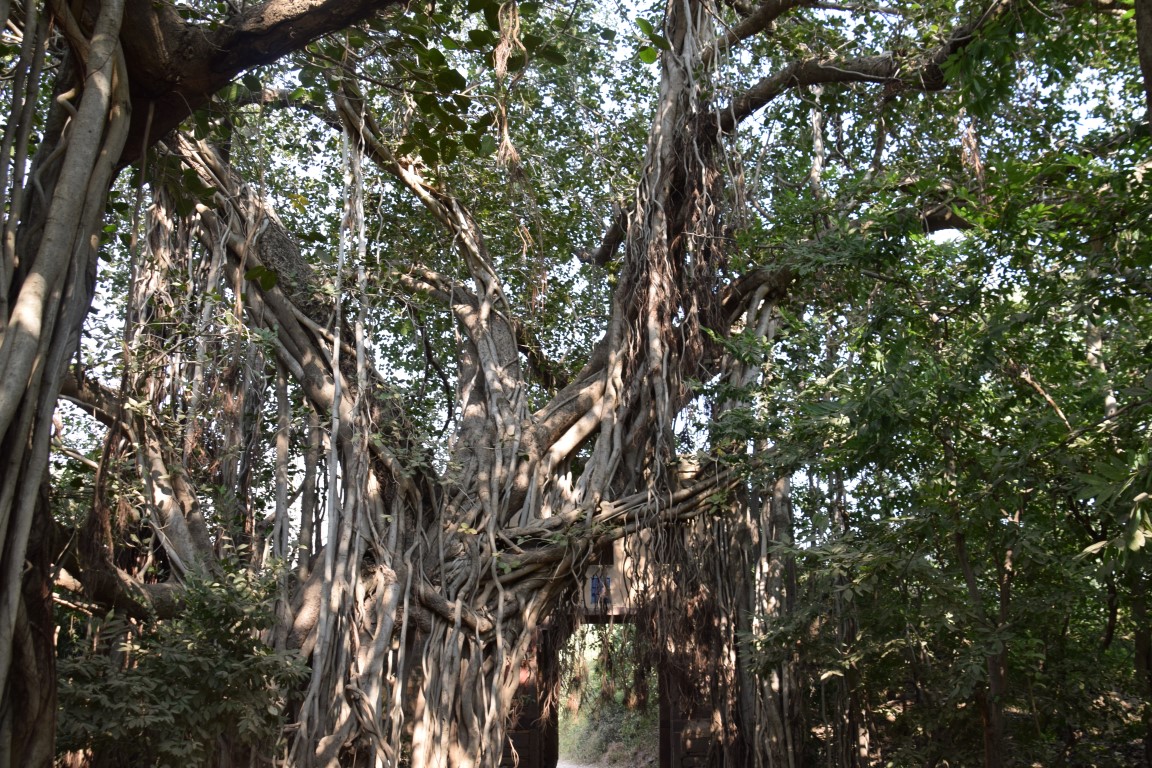
It wasn’t long before our jeep stopped for a group of deer, allowing us to watch and get some photos.
“Shall we go on?” our guide asked after a while.
“Tiger on!” one of the women in our group cheered. Her rally cry became our refrain of hope that we’d get an encounter with our coveted tiger.
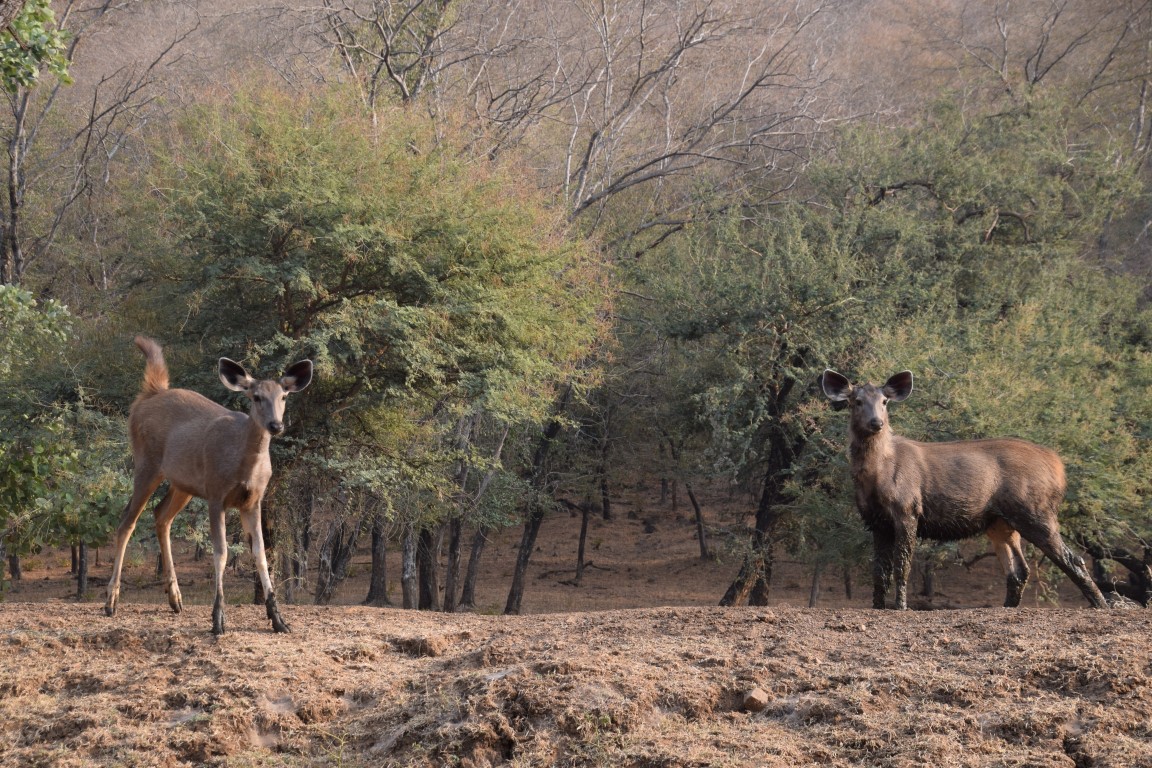
Sambar deer roamed throughout the park.
Safari at Ranthambhore National Park: Far More than Tigers
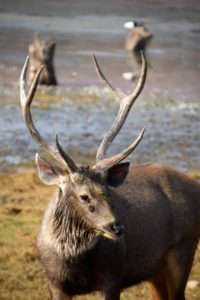 A safari at Ranthambhore National Park offers a stunning variety of wildlife, as well as fauna and flora.
A safari at Ranthambhore National Park offers a stunning variety of wildlife, as well as fauna and flora.
We saw the beautiful and large Sambar deer in all three zones we visited; young deer, does and bucks.
The chital is a variety of spotted deer that are also known as cheetals, spotted deer or axis deer. They looked more like our North American deer, but they’re definitely native to the Indian subcontinent. Apparently, they’re often seen near trees that house langur monkeys because the monkeys will vocalize to warn them if predators are around, and the langurs drops fruit that chitals will eat.
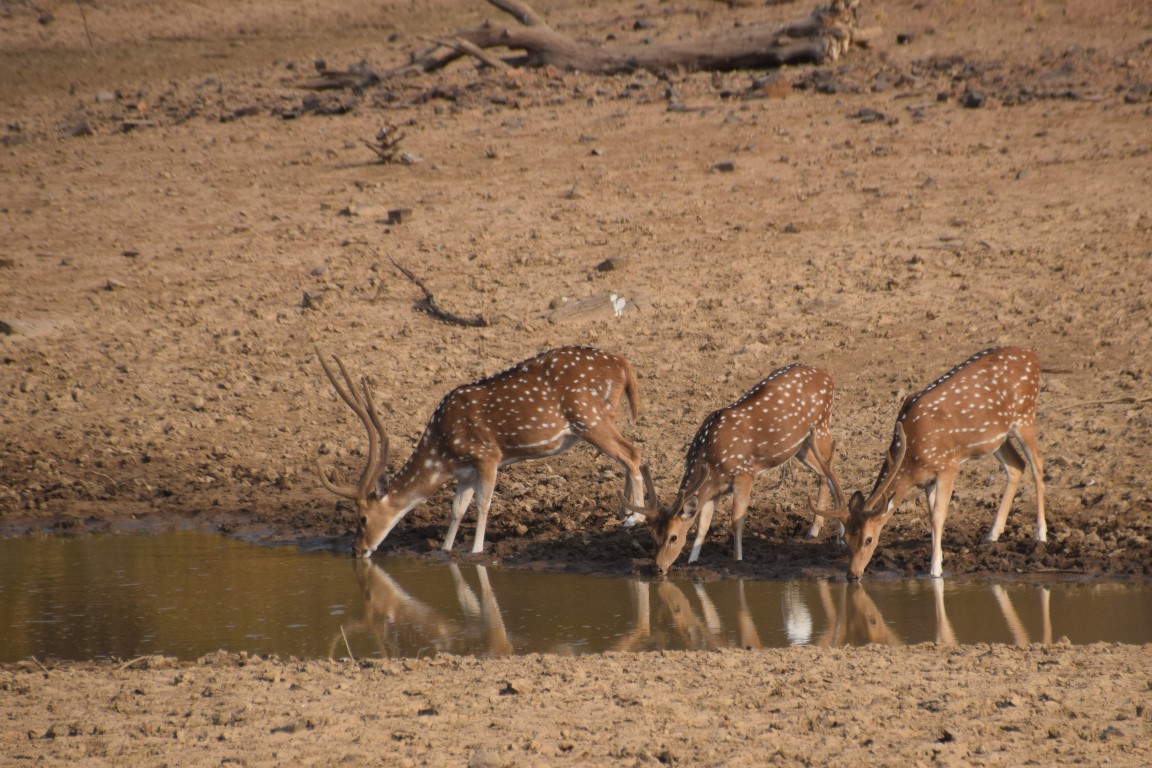
Chitals at a watering hole.
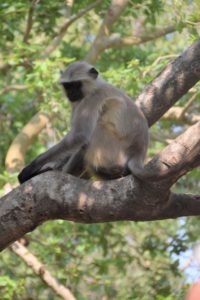 Langur monkeys were fun to watch, especially those with babies.
Langur monkeys were fun to watch, especially those with babies.
Marsh crocodiles were visible both in the water and in the grasses along the shores of the lake and watering holes. These were some serious-sized crocs.
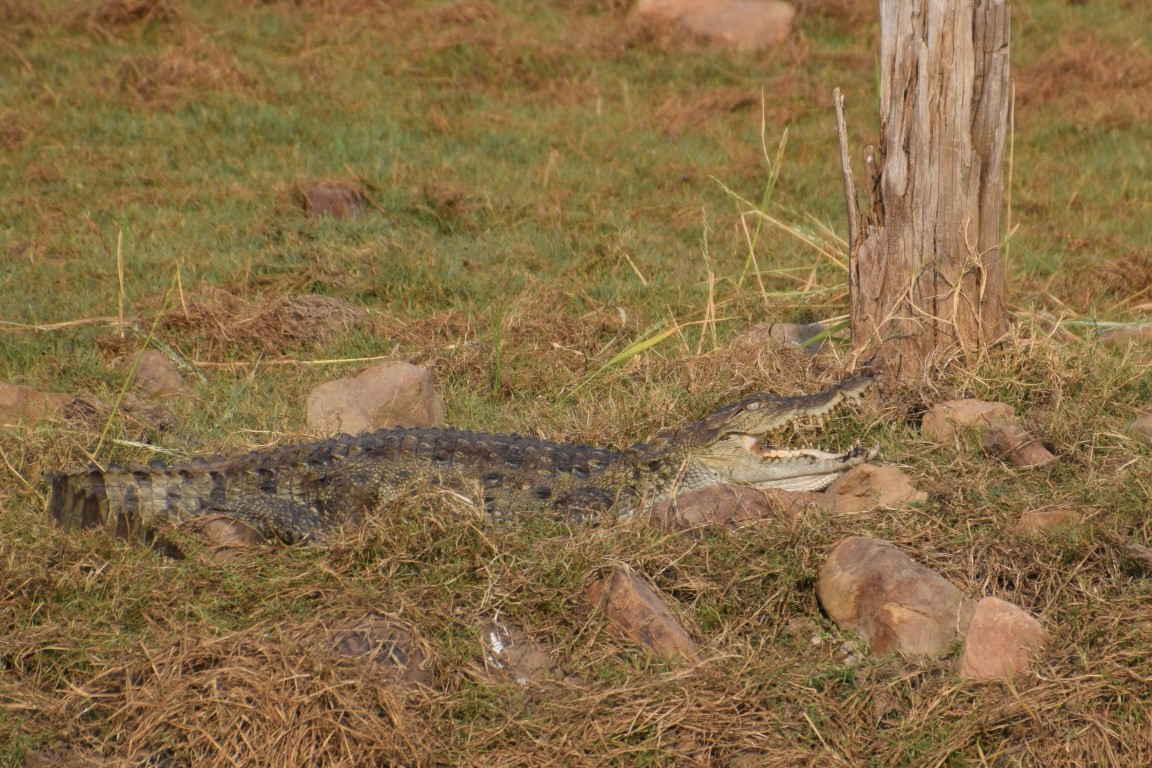
A marsh crocodile. These grow are long as 14 feet.
I especially enjoyed seeing the truly blue nilgai, or blue bull. It’s the largest of Asia’s antelopes, and is the sole member of its genus, Boselaphus. Besides his blue coloring, I loved the way his head looked a bit like a combination of deer, antelope, and donkey. And his size and girth was impressive. They truly are unique.
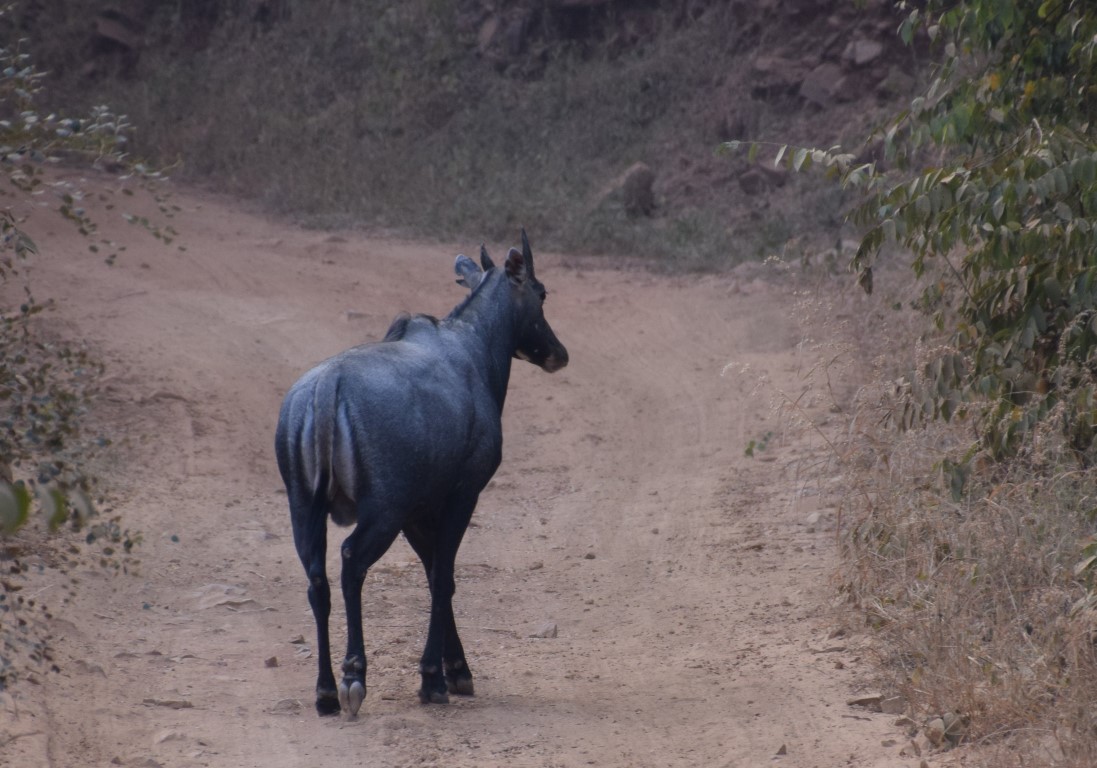
The nilgai, or blue bull
Wild boars roamed in both small and large packs.
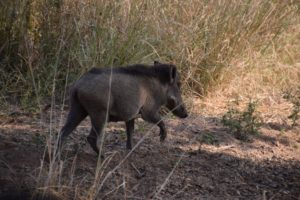
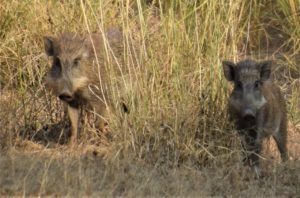
Some of the other larger animals that inhabit the park that we didn’t see include jackals, leopards (mostly high in the hills) and sloth bears. We did hear that another group had sighted a sloth bear though while we were in the park.
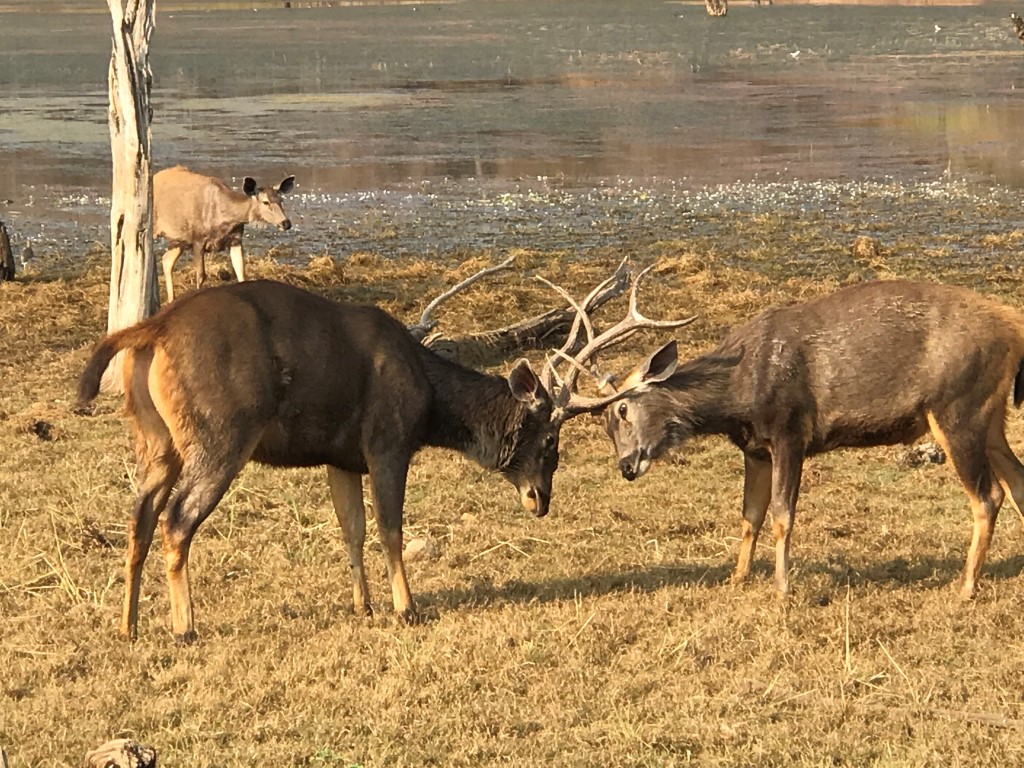
Birds, Birds, Birds
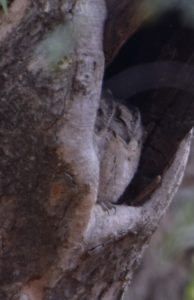 There are more than 450 species of birds living in the park, although some are in the area only seasonally. We sighted quite a few species on the water, on the ground, on rock formations, and in the air. Pied kingfishers, a white and black variety of water kingfisher, hung out near the largest of the watering holes we visited.
There are more than 450 species of birds living in the park, although some are in the area only seasonally. We sighted quite a few species on the water, on the ground, on rock formations, and in the air. Pied kingfishers, a white and black variety of water kingfisher, hung out near the largest of the watering holes we visited.
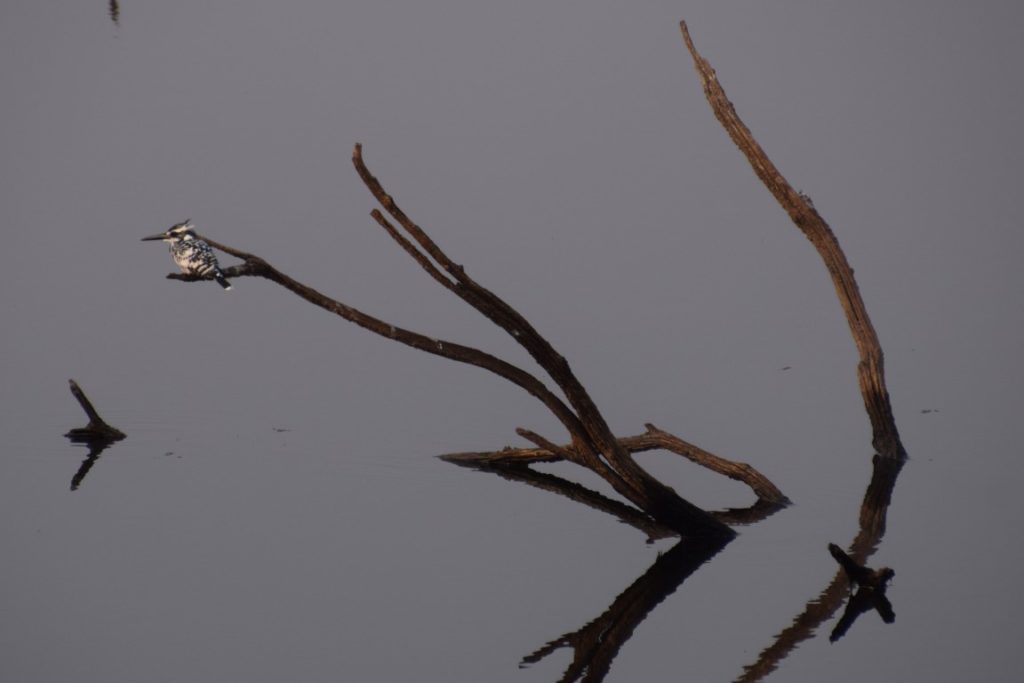
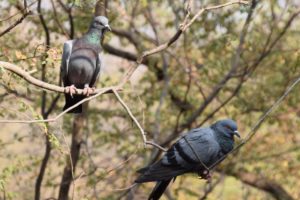 Peacocks. Two species of owls. (The largest of which we flushed out of the trees, in a flutter of beating wings directly overhead.) Painted storks, herons, black-headed ibises, and more. And pigeons, looking every bit as they do on urban sidewalks as they did in Ranthambhore.
Peacocks. Two species of owls. (The largest of which we flushed out of the trees, in a flutter of beating wings directly overhead.) Painted storks, herons, black-headed ibises, and more. And pigeons, looking every bit as they do on urban sidewalks as they did in Ranthambhore.
A particularly friendly bird was the Rafous Indian treepie, which were very comfortable feeding from outstretched hands.
There were a variety of others; eagles, falcons, flamingos, pelicans, ducks, and good old sparrows.
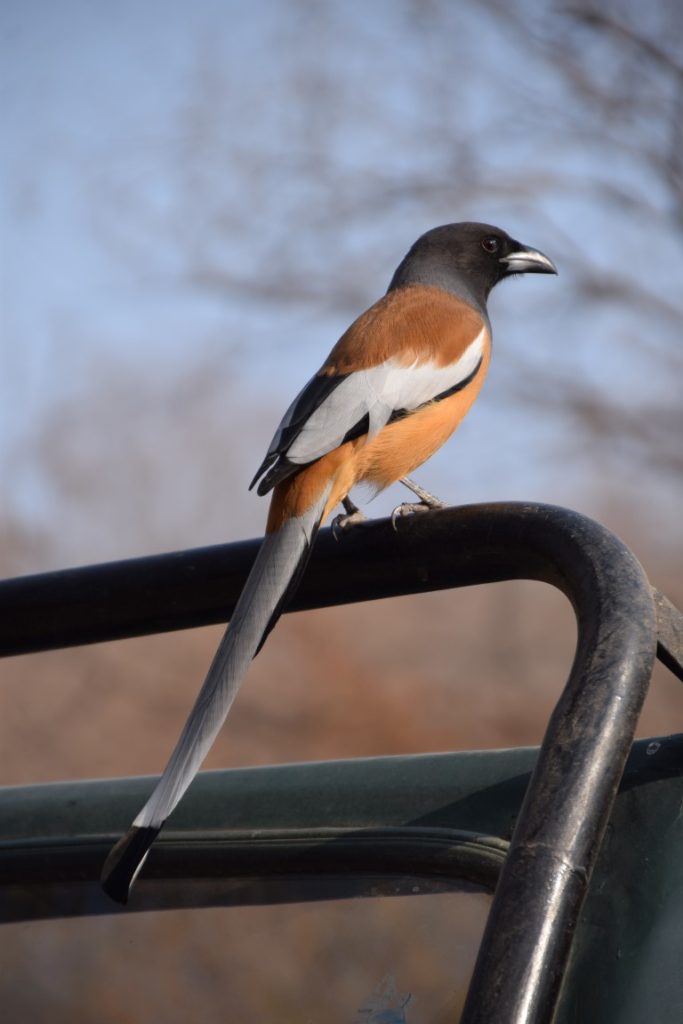
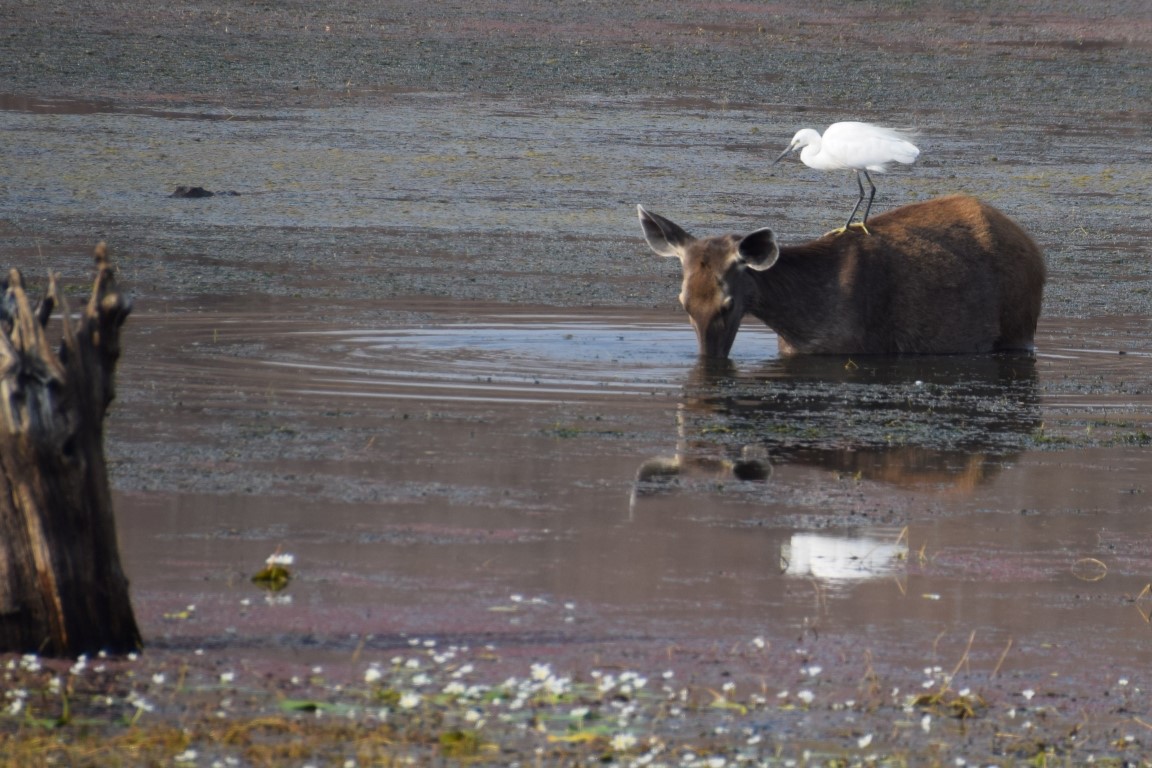
Unfortunately, we didn’t get to see the Sarus crane—the tallest flying bird in the world. Sarus cranes can stand up to 5 feet, nine inches tall. But we did get to see a couple of Indian anhingas, more commonly called snake birds or darters. I’d seen another variety before, but these were even more beautiful, in my opinion.
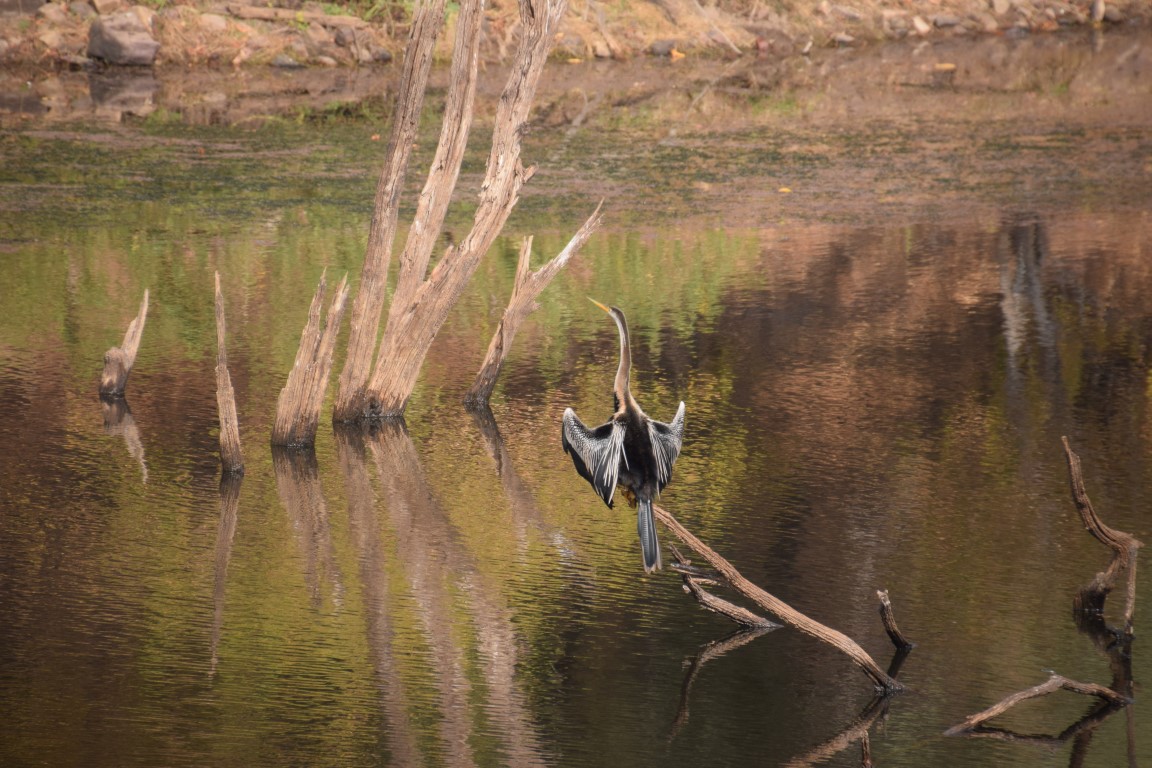
Our Tiger, Arrowhead: Still the Main Attraction
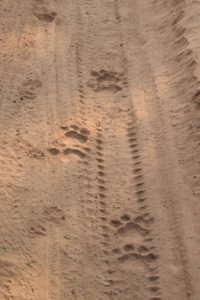 On our second drive, later that afternoon, we saw paw prints on the side of the road. We didn’t need our guide to point out how fresh they were and I felt that first thrill that maybe, maybe we’d get lucky and see the elusive tiger.
On our second drive, later that afternoon, we saw paw prints on the side of the road. We didn’t need our guide to point out how fresh they were and I felt that first thrill that maybe, maybe we’d get lucky and see the elusive tiger.
Our jeep drove on. Then stopped. She stepped up over a bit of a hill on the road, then walked slowly toward us. We stared. This was real; we were getting a chance to see a tiger. Her paws were magnificent and I can still see how her front paws looked with each careful, strong step. Our excitement got the better of us, and our guides hushed us. We settled in with big grins and awe and watched. She continued to walk toward us. We started snapping photos. Our driver backed up to give her room to keep walking toward us. We were not more than 20 to 30 feet away. We stopped, she kept walking. We backed up again, doing this little maneuver a few times, giving us more time to see her in all her lovely glory.
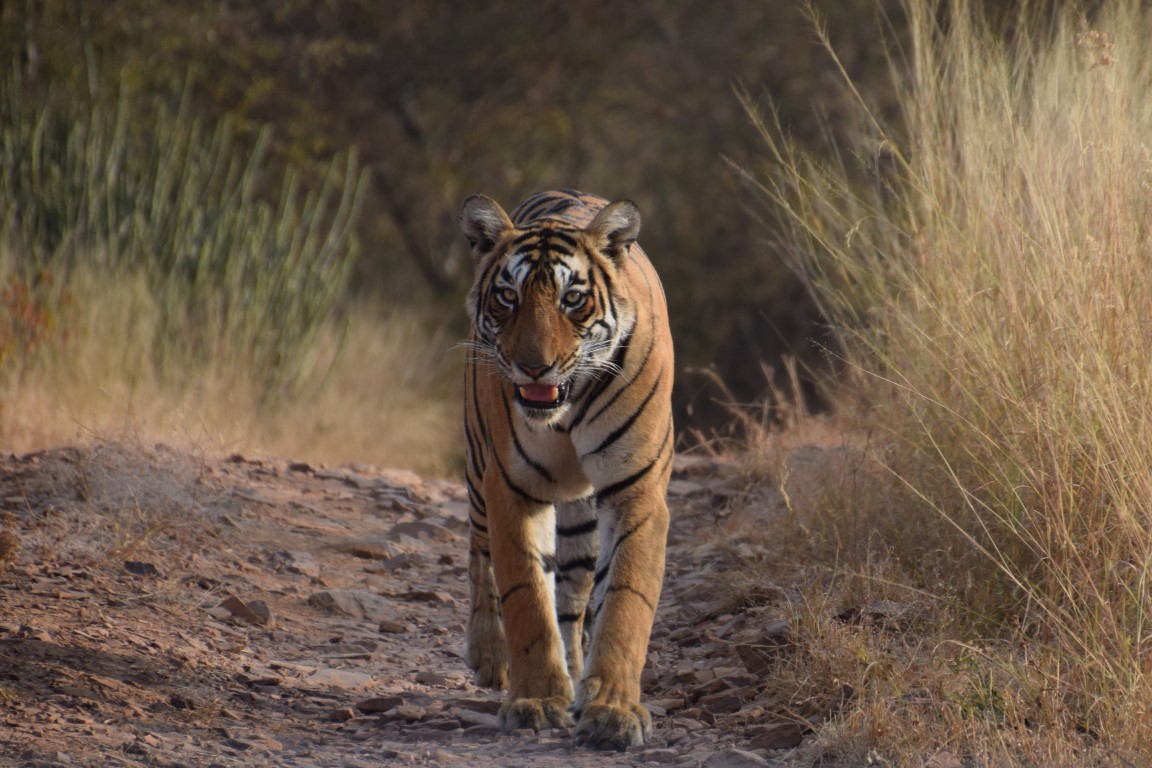
Ranthambhore’s tigress, Arrowhead
This was the tigress Arrowhead, a granddaughter of Machli (known officially as T-16). Machli remains Ranthambhore’s most famous tiger. She’s known as the “Lady of the Lake” and the evening before, we had watched a short documentary under the stars in our hotel courtyard about her unusually long 10-year reign over much of Ranthambhore National Park, including its most lush, choice areas. Machli lived 16 years and died only as recently as 2016.
It’s a thrill to see an animal in these conditions. She was beautiful and powerful and her territory in the park was not confined by zoo enclosures but by the “natural order of things.” Where she could roam was determined by her ability to hunt and defend her space from the other tigers in the park.
We watched then as she turned off the road and walked into the brush. Such a thrill. But we weren’t done. The jeep did a three point turn and we drove down the road in the direction she’d walked to see if we could meet up with her again. We drove along a ravine and our driver obviously knows the park, so there was a chance.
We were the only ones to have the encounter, but eventually we were joined by a few other jeeps hoping to catch a glimpse.
And return she did, walking out from the bush toward us.
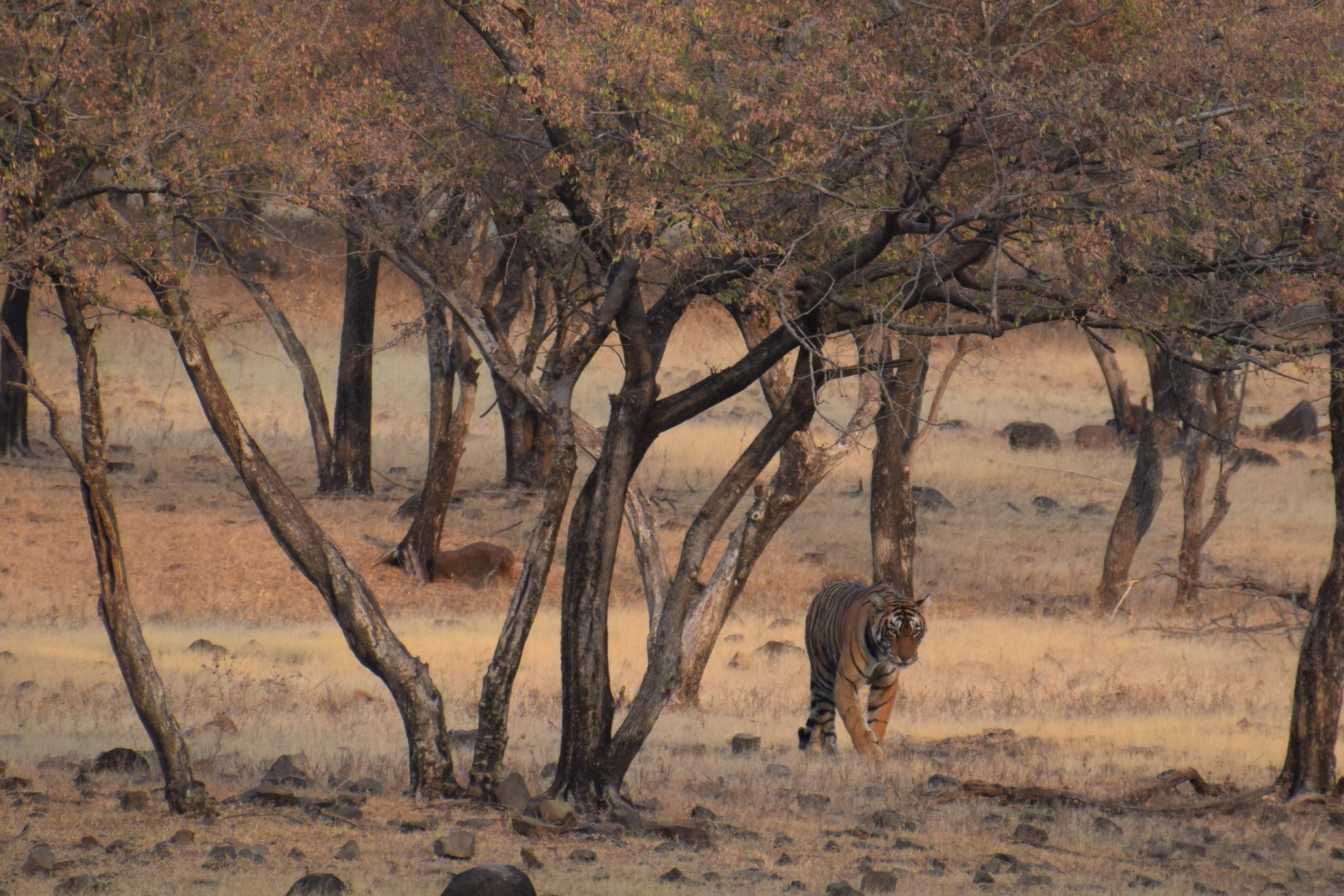
Arrowhead emerges once again. (Photo credit, Guide Narottham Singh.)
She sat, we watched. This time three other jeeps got to see her as well, and she walked between our jeep and another, then around past us again before moving on away from us. We were no more than 10-15 feet away from her.
Again, we were euphoric. Our park guide and our trip guide, Narji, were as excited as we were, despite their seeing similar sites many times. Experiencing this is to appreciate all the Earth’s creatures and all of its natural beauty. It’s to want to see stronger conservation laws because you’ve seen firsthand how each of the creatures of this park plays a role in the natural balance of the land.
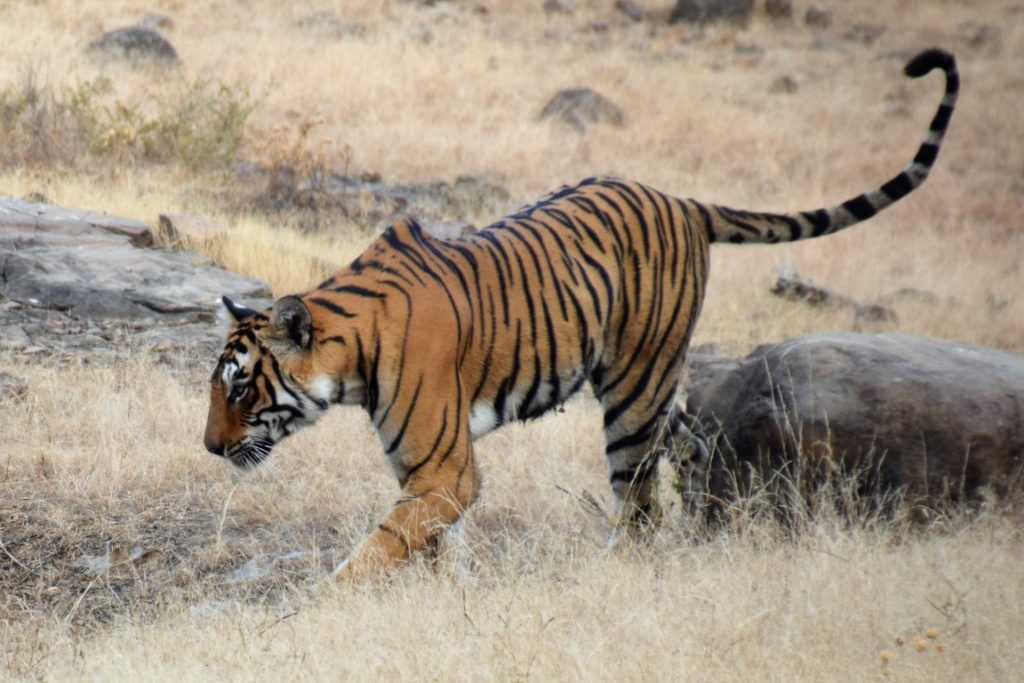
A Third Park Drive: Another Chance to Learn
When the offer came to return a third time to the park, I was hesitant. We’d gotten lucky on our first two drives, especially the second. Going for a third drive out would give us the chance for another tiger encounter. Or to perhaps see a leopard or sloth bear. Not going ensured ending on a high note.
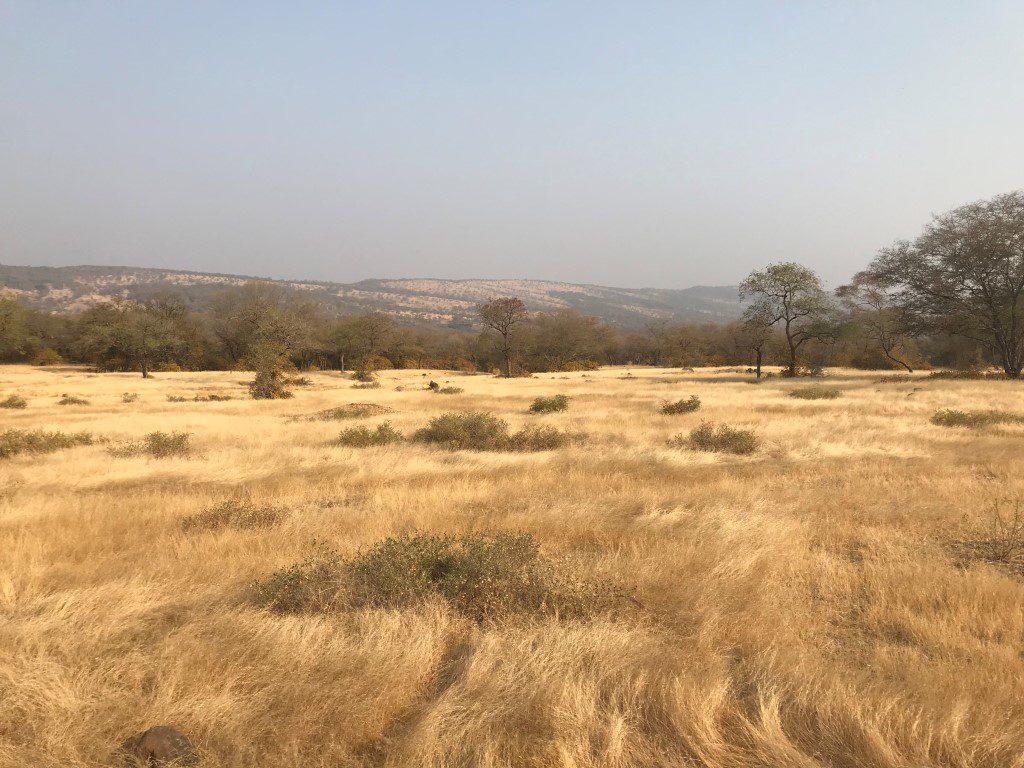
This ride, to a third zone of the park, showed us a marked difference in the land—the ground and the leaves on the trees were drier. Where our guide pointed out a watering hole, we saw only damp or cracked sun-baked mud. We saw deer, owls, mongoose, monkeys, and a single niglai, but not much else.
But seeing a comparative dearth of wildlife too provided a valuable lesson. Nature can be beautiful and bountiful, but it can also make life difficult for creatures. Regardless of the cause, when conditions are hard, wildlife will move on to where conditions are more hospitable. And when there’s a lack of more welcoming habitat, there are consequences. The need for countries to create and preserve these habitats is more important than ever.
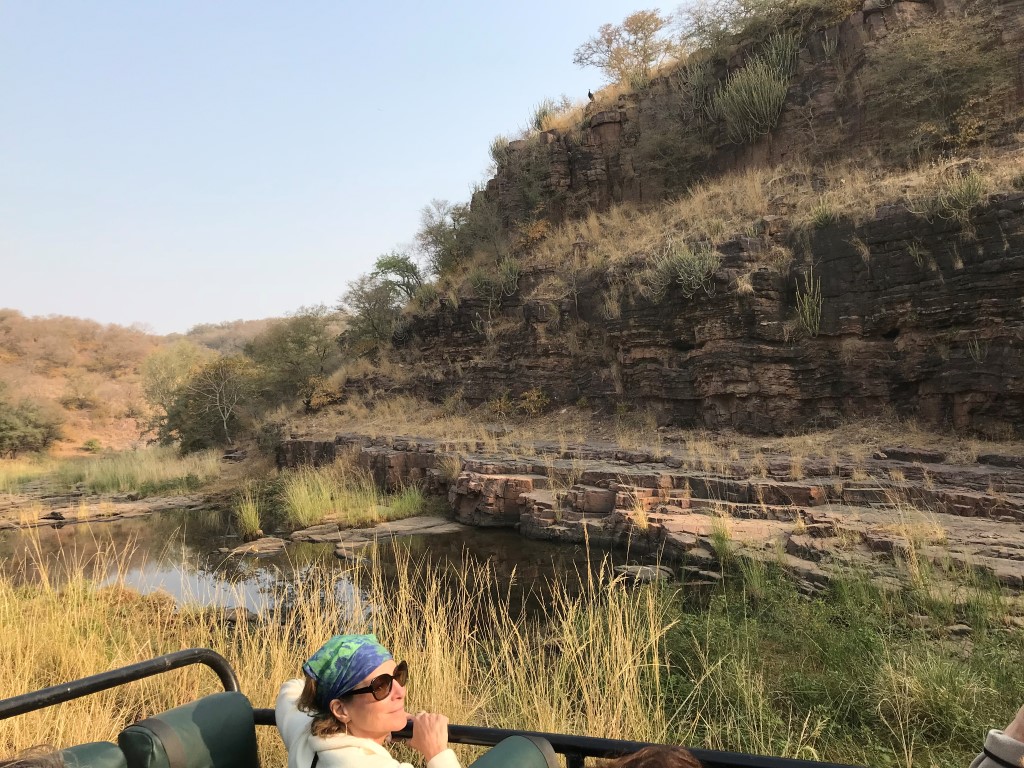
Getting There, Staying There
Getting to Ranthambhore National Park began in the early hours of the morning from Jaipur, about 100 miles away. All told, the drive was a journey of five hours of harrowing traffic as we left Jaipur, then smooth sailing on a modern toll road, and finally down an often bumpy two-lane road that took us past Rajasthan countryside and small towns and villages. The scenery, our skilled driver, and a couple of chai breaks along the way made the trip enjoyable.
Plan on a two or three night stay, because you’ll want to take more than one drive out and you’ll want to visit Ranthambhore Fort, the 10th century fortressed city perched on the top of a hill.
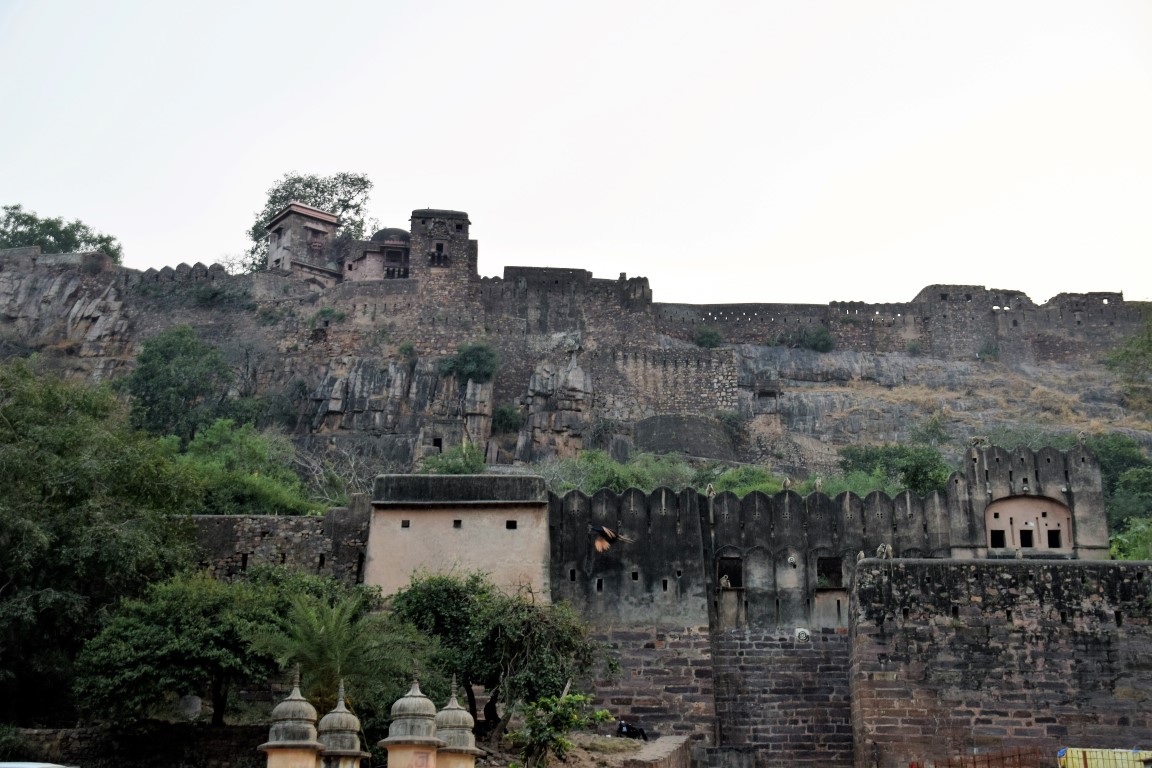
There are a few government-run hotels within the park property but there are quite a few nearby hotels off Ranthambhore Road, including international brand hotels. We stayed at Nahargarh Hotel, an expansive haveli-style property that provided my favorite stay on our trip.
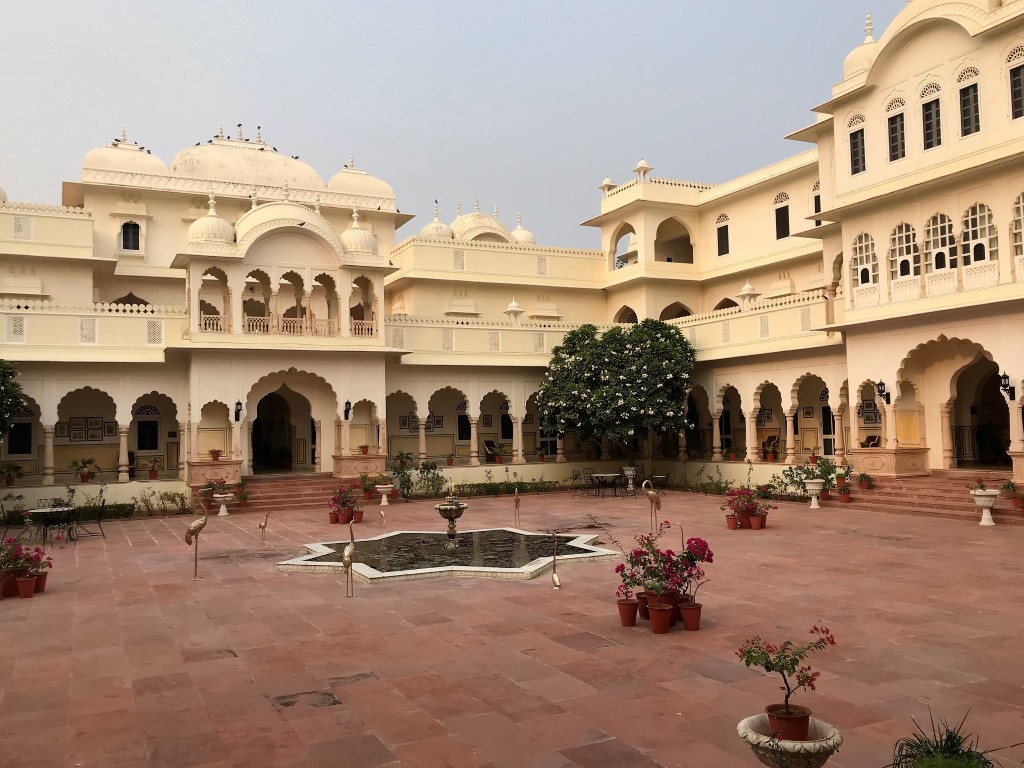
Just one of the courtyards of the expansive Nahargarh Hotel
More Logistics: When to Go
Rajasthan has three seasons: summer, monsoon and winter. We traveled in November, winter, when temperatures were at their coolest (between 50 and 80 degrees Fahrenheit.) The winter months run through March. Summer, from April through June, will see temps between 75 to 113 degrees Fahrenheit. The monsoons run from July through September (Temps run between 70 to 95 degrees during these months, but of course each season varies, and ranges vary again within each month.) During the monsoons, this dry semi-desert landscape turns lush and green. And while it must be especially beautiful, the park is closed to tourism part of this time due to impassible roads.
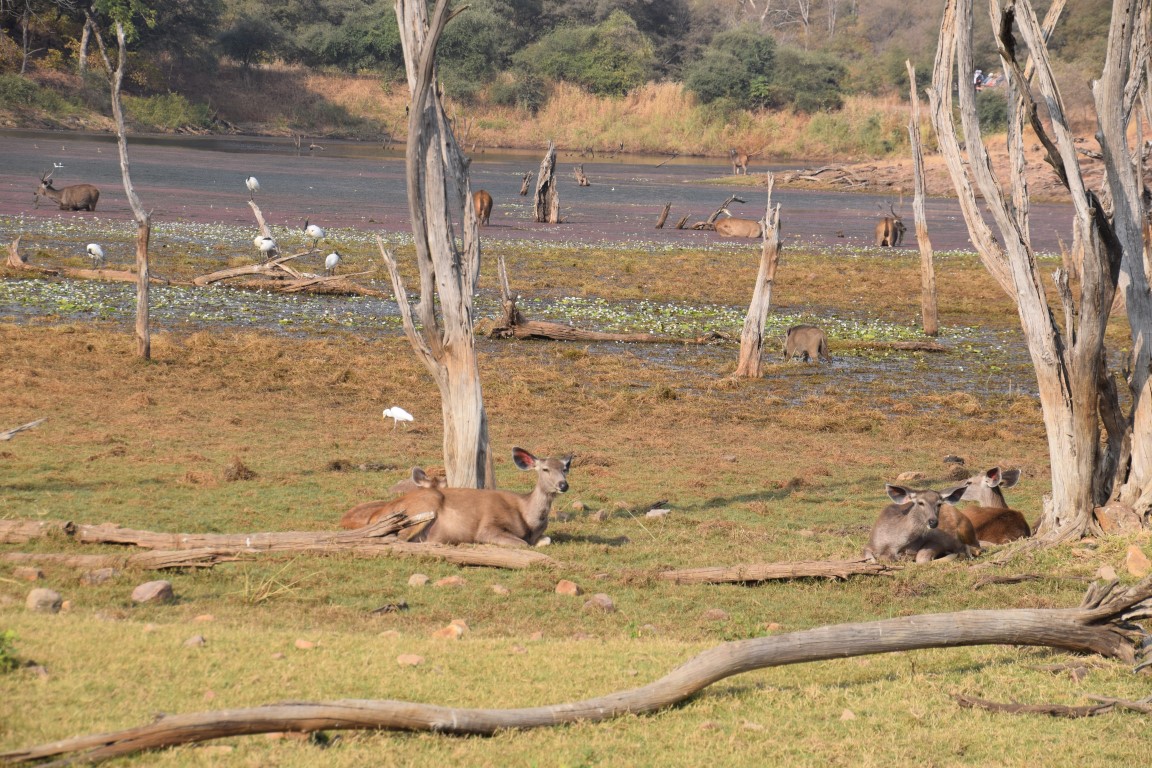
Tiger viewing is said to be best at the end of summer, right before the monsoons, because there is less water and the tigers need to get to the watering holes for water.
As we drove back from both of our afternoon safaris, the sunsets too were stunning.
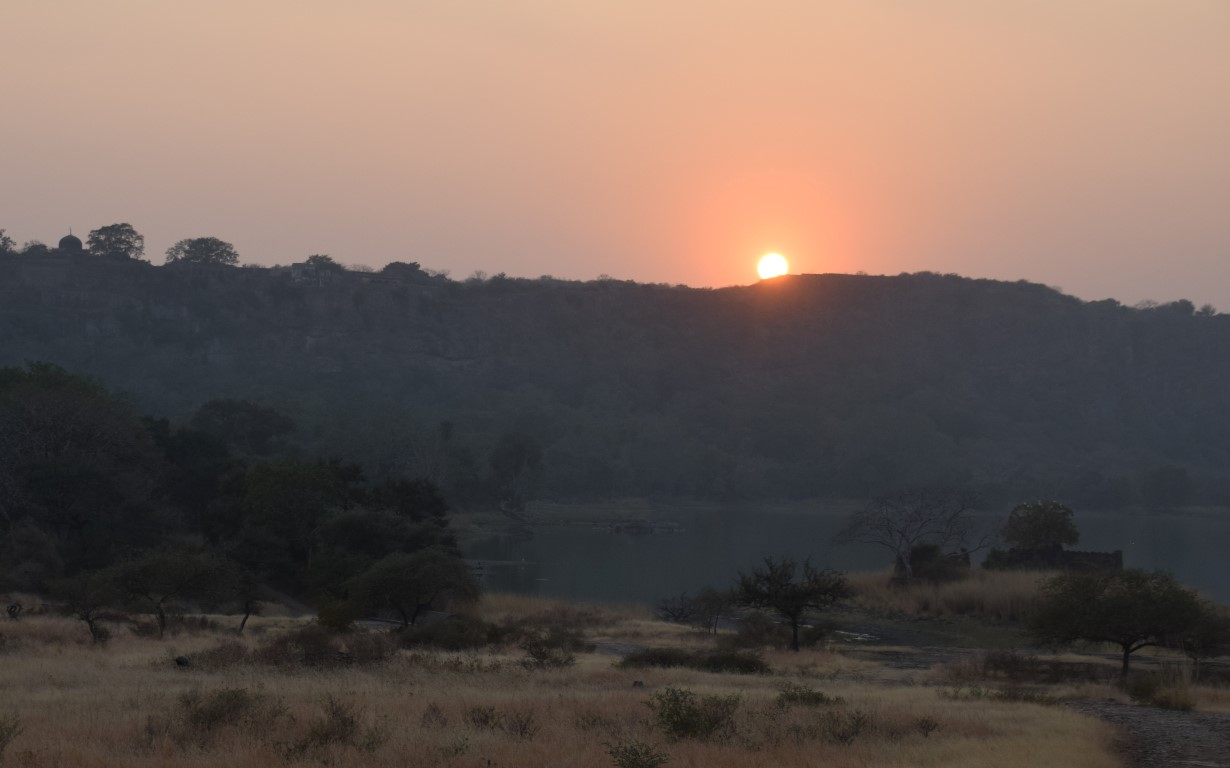
A safari at Ranthambhore National Park is well worth the journey from Jaipur. The chance to see firsthand the successful efforts to create a safe haven for the beautiful Indian tiger and to see one of these animals in its natural habitat is a gift.
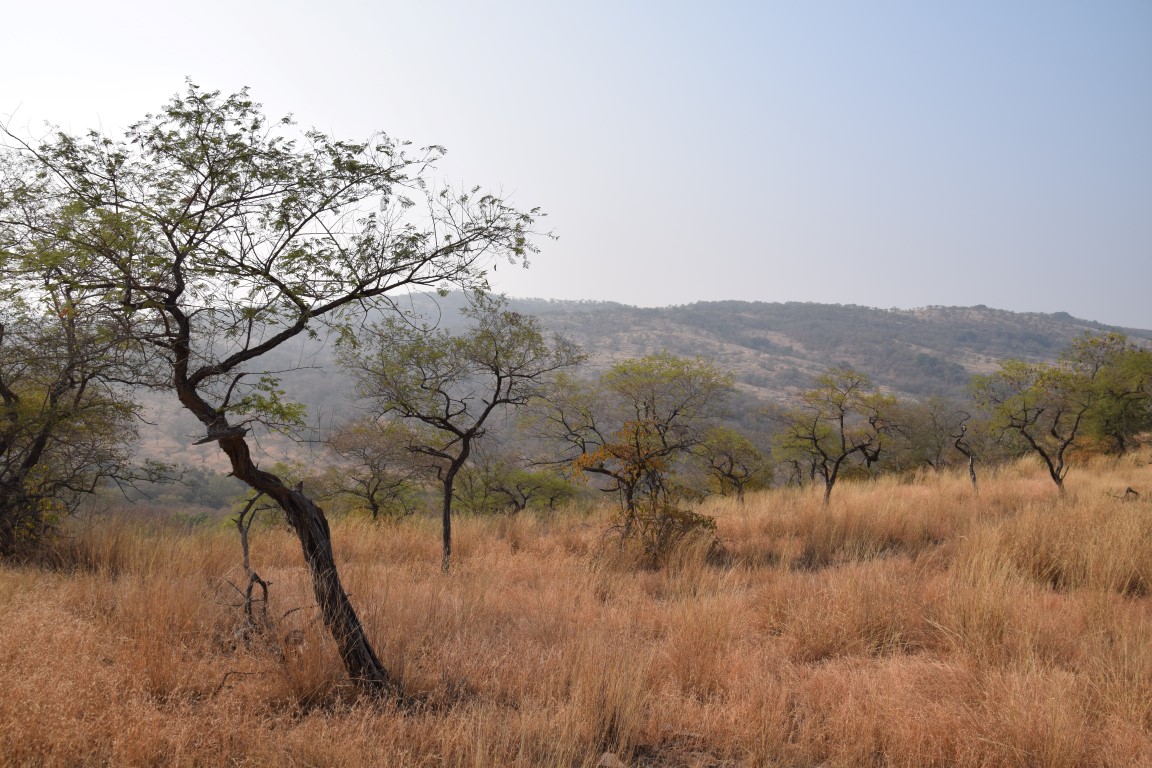
For More:
- Ranthambhore National Park, https://tourism.rajasthan.gov.in/sawaimadhopur#ranthamborenp
- Rajasthan Tourism Office, https://tourism.rajasthan.gov.in/home.aspx
- Nahagarh Hotel, https://upscalelivingmag.com/nahargarh-hotel-elegant-tranquility-seeing-indias-tigers/
- Nahargarh Hotel, Ranthambhore, India, https://www.nahargarh.com/
- More on Ranthambhore National Park: These are private companies and I have NOT traveled with them. But I like what their websites have to say about the Park; https://www.ranthambhorenationalpark.in/ and https://www.ranthamborenationalpark.com/index.html
- Overseas Travel Adventures (OAT), oatravel.com. I made this trip to India with OAT. While I’ve always been an independent traveler, I’m attracted by the emphasis on getting to know the people and culture of a place and the lack of a single supplement for solo travelers. If you’re interested in learning more, providing this code when you book your trip (#002665715) will get us both a discount. I’ve had only good experiences with them.
- On our site: Visiting India’s Pushkar Camel Fair
- On our site: A Food Lover’s Guide to India Cuisine
- On our site: Five Snowy Hill Stations in Northern India
- On our site: 10 Best Places to Visit in India in 2018
- Dhonk, a women’s non-profit cooperative, near the reserve, dedicated to the creation of crafts, creating income, and to conservation efforts.
– All photos by Nancy Zaffaro, except as credited.

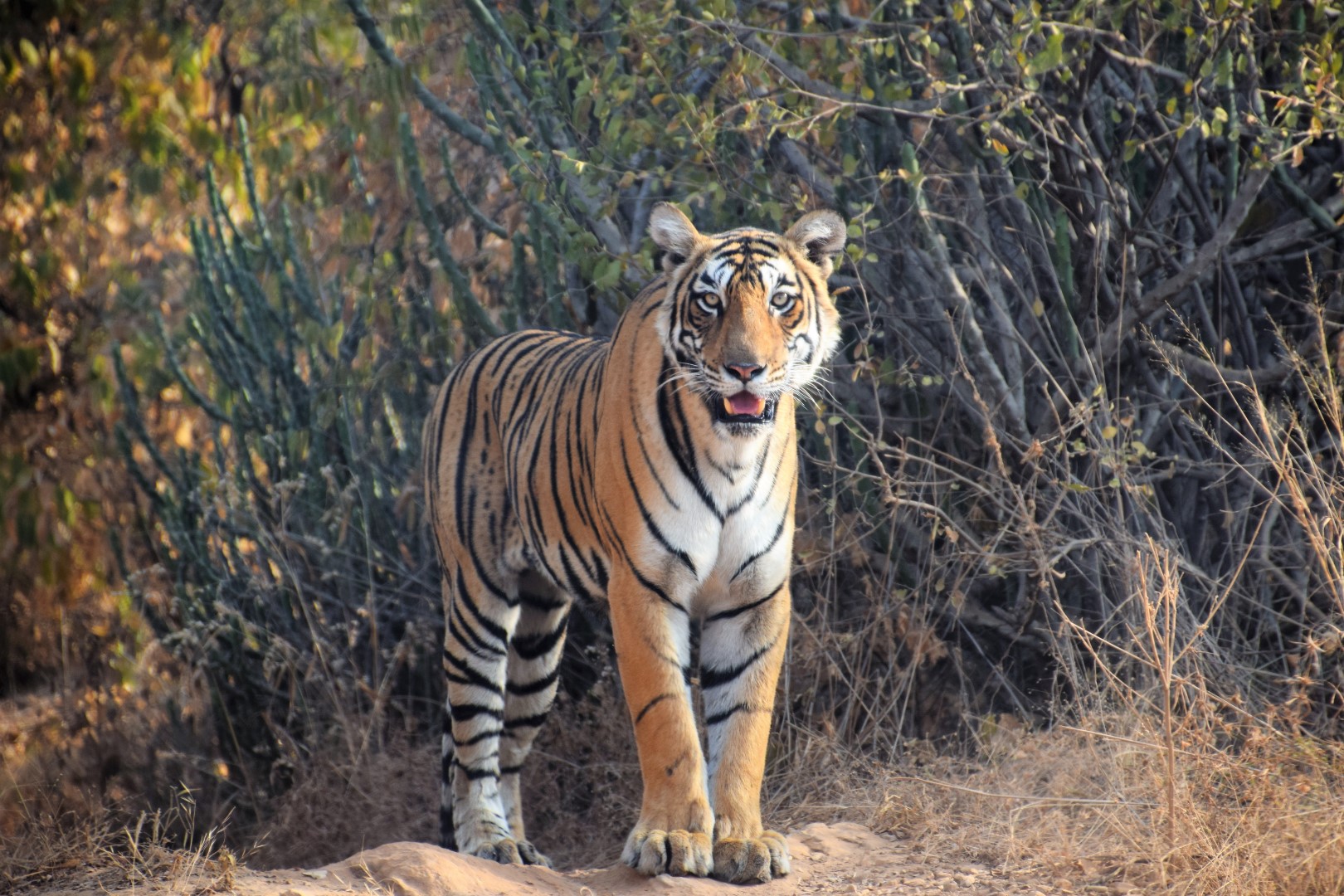

2 comments
Again, enjoyed the piece.
So glad. It was a wonderful experience.